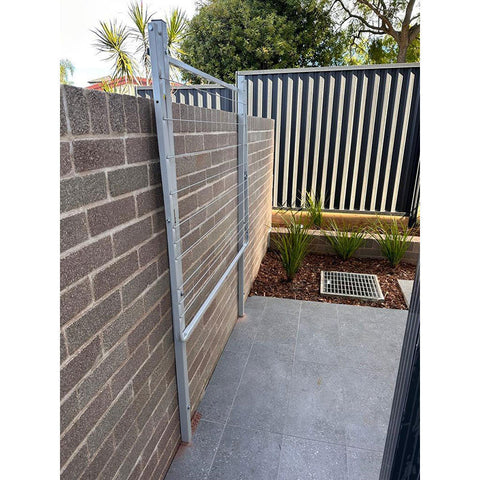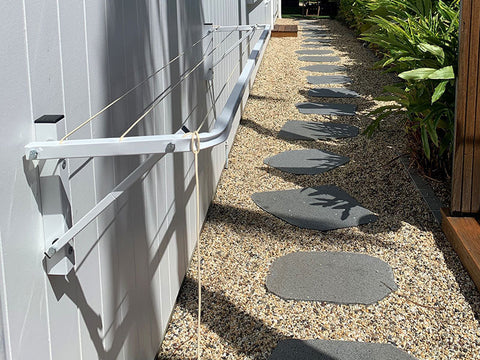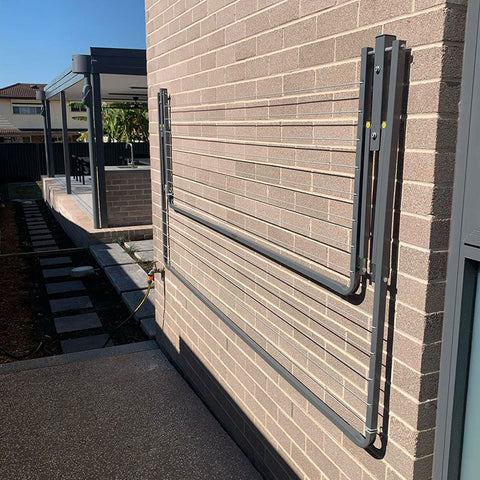Selecting a wind-resistant clothesline becomes important if one resides in an area with generally strong, sudden gusts or coastal winds. A regular kind of outdoor clothesline under stress from harsher weather conditions will either be damaged or collapse. A windproof clothesline of good quality will give assurance that your laundry will dry out properly without ever risking any loss of linen being blown away by a gust of wind or breaking under stress. There are wind-resistant variants suited for all kinds of outdoor environments, from small balconies to expansive backyards. Here you will be taken through all those features, types, and installation tips that will protect your investment and make it easier even on windy afternoons.
How to Choose the Best Wind-Resistant Clothesline
The selection of the wind-resistant clothesline has more to do with choosing the correct pole. If your clothesline cannot sustain normal wind loads, you will cause damage to both your unit and your laundry. Apart from design features, installation methods, and wind load conditions prevalent in your specific area must also be considered in your search for the perfect product.
Understanding Wind Loads and Material Strength
Look for those clotheslines that are fabricated from high-tensile, galvanized steel or powder-coated aluminum that is UV-resistant. Such materials are known to be durable and resistant to corrosion. Plastic parts tend to degrade in a few years, particularly in the harsh Australian sun accompanied by strong winds. A metal frame, reinforced corners, and strong folding mechanism offer wind resistance for a long period.
Types of Wind-Resistant Clotheslines
Fold-down varieties are very common, but almost all weatherproofing options are not equally effective when it comes to wind tolerance. More durable models have heavy-duty wall brackets or fixed poles in concrete. Even so, they must be assembled correctly and adequately tensioned.
Installation Is the Key
Poor installation is the paramount reason even the stoutest clothesline would fail in a gusty wind. Ground-mounted rotary clotheslines, for instance, have to be buried in at least 35–50 cm of concrete to prevent any tilting or uprooting. If you are mounting a fold-down line to a wall, ensure it is fastened to solid brick or a stud that has been reinforced; thin cladding or fencing sheets will not do. The anchors and wall plugs must all be rated for outdoor use.
Design Specifications One Might Look For
Typically, a wind-resistant type of clothesline could have stronger lines that do not tend to sag, rendering the clothes remaining in place and free from twisting. Certain models might possess tensioning dials or locking mechanisms to maintain tight and stable tension on the lines. End caps safeguard the line, while iron screws prevent rust formation and prolong line life, especially since coastal regions are famous for salt-laden winds.
How to Secure Clothes
Heavy-duty pegs or multi-clip hangers designed for outdoor use are also used. Avoid drying very light articles, like plastic bags or children's socks, without pegging them down firmly; otherwise, they may easily take to the air.
Maintenance is Key
To ensure the work of wind resistance is maintained, keep a regular check on the clothesline for rust, loose bolts, or sagging lines. A little tightening or cleaning here and there would see it stand the test of time, even after exposure to severe weather.
Importance of Wind Resistance for Outdoor Wind-Resistant Clothesline
For those in a breezy climate, a wind-resistant clothesline will not just be a nice-to-have option. Australia's climate will definitely favor places with a breeze in coastal zones, especially with the open spaces of rural areas, where gusts may come suddenly and quite powerfully. In that case, a cheap thin-body clothesline may not be the one to meet these needs. When it does, the outcomes may sometimes be downright perplexing: tangled or disappearing laundry, units getting damaged, and potential safety hazards.
Windproof lines are designed to resist not only direct gusts but also the lift and torque from unbalanced loads of wet clothes. Wet clothes, in a way, act like sails, intercepting the gust and unevenly stressing your line. Though the equally balanced and strongly reinforced frame evenly distributes this force, which helps prevent the line from tipping or snapping.
More importantly, such a clothesline gives one peace of mind. Instead of worrying about the weather all day or rushing to bring the wet clothes inside, you can think of a windproof clothesline handling the job for you with no extra effort.
Products at Outback Clotheslines are designed for the harsh Australian climate. Solutions tested for durability and engineered for real-world efficiency are available for all needs: wall-mount setups for tight enclosed courtyards, or substantial rotary units for large open backyards.
The more wind-resistant choices mean that there will be fewer replacements over time, which is a good investment for the long term. If installed firmly and put together well, a well-chosen clothesline can weather the storms for decades.
FAQs About Wind-Resistant Clotheslines
What makes a clothesline wind-resistant?
Any clothesline made from materials reinforced with steel where the lines are tensioned, mounting brackets stay rooted, and the design itself maintains balance. These factors ensure that the line does not sag or tip over if it is hit by wind.
Can wall-mounted clotheslines be wind-resistant?
Yes, provided they are mounted firmly into solid walls with heavy-duty brackets. Fold-down clotheslines are quite strong, too, especially when their arms and lines are reinforced and tight with no sag.
How do I maintain a wind-resistant clothesline?
Regular inspections are necessary. Check for the loosening of bolts, rusting of parts, or wearing out of lines. Clean the frame periodically, so any debris that could cause wear and tear is removed. The lines should be tightened from time to time so as to retain the tension.
Are clothes safe in extreme winds?
It depends on the design of your clothesline and how you secure your clothes. If your model is classified for heavy wind and clothes are pinned properly, it should be fine. Otherwise, use your discretion in storm-level conditions.
Where to buy a wind-resistant clothesline in Australia?
Outback Clotheslines are reputedly the makers of wind-resistant clotheslines suitable for Aussie weather conditions. Fold-down, and Portable types are some of those the company deals in, all of which are engineered for good outdoor performance.
Should I have it installed by a professional?
Not necessarily, but professional installation is recommended because it will assure proper anchoring and leveling of your clothesline. But Outback Clotheslines can give you expert advice and support to help you get it right the first time.














Comments (0)
There are no comments for this article. Be the first one to leave a message!